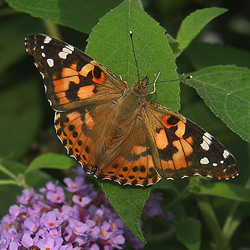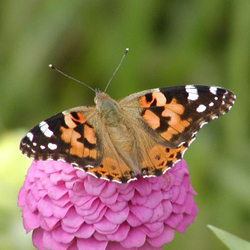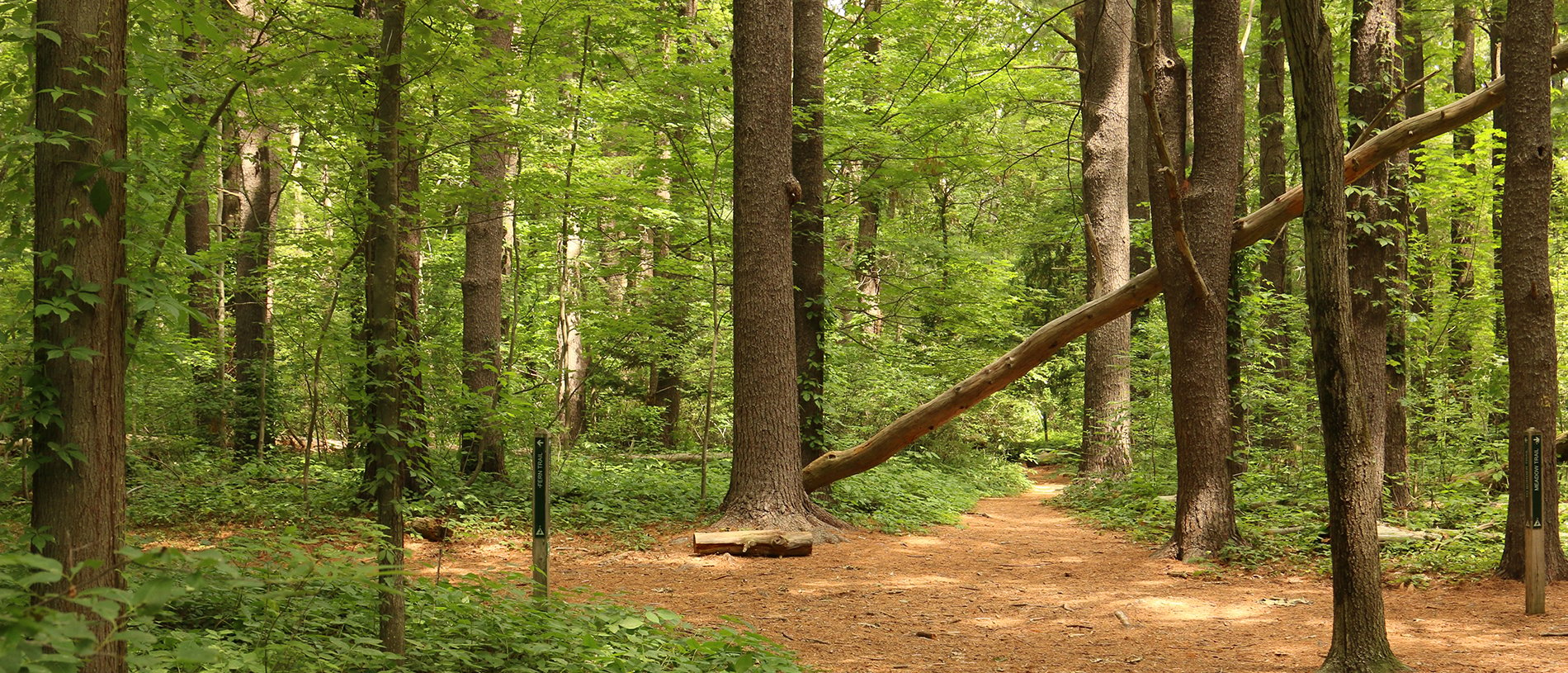Find a Butterfly
Painted Lady
Vanessa cardui
Named
Linnaeus, 1758

Identification
Wingspan: 2 2 1/4". May be told from very similar American Lady by number, size, and arrangement of eyespots on hindwings. In the Painted Lady, four to five small but distinct eyespots, separate from one another, occur above and below. By contrast, the American Lady has two large eyespots below and small eyespots usually touching one another above.
Distribution
The most cosmopolitan of all butterflies, the Painted Lady occurs practically worldwide. Almost all of Europe, Asia, North America, Africa, Australia, Central America, and numerous island groups in the Caribbean, Atlantic, Indian, and Pacific oceans are home to this species, at least for part of the year. There are no populations in South America south of Venezuela or in the polar regions, although the species occasionally flies north of the Arctic Circle. It occurs cyclically throughout New England.
Status in Massachusetts
The Painted Lady is an irregular emigrant into Massachusetts and the Northeast from its Southwest wintering grounds (see Life Cycle). During most years, small numbers reach Massachusetts; occasionally, there are marked incursions. During the Atlas period, 1986 1990, few individuals were seen; a year later, the species was quite numerous statewide, from June onward. In 1992, the flight was greater still. Scudder noted the species‘ irregularity of appearance in New England and detailed its flights for the decade 1878 1887: abundant in 1878, 1884, and 1886 and very scarce the remaining seven years. Farquhar‘s (1934) assertion that it is "very common everywhere" doubtless reflects limited experience with the species. Most often found in small numbers. Recent maximum: "hundreds" flying in from the ocean along south coast of Martha‘s Vineyard, 21-22 May 1992.

Flight Period in Massachusetts
Normally May to October. Due to the irregularity of the species‘ arrival (and indeed, presence) in Massachusetts, flight dates differ from year to year. Flies until the onset of cold weather. Extreme dates: 20 April 1995 - Freetown (5-10), Middleboro (1), Cape Ann (1), Foxboro (1), and Canton (1) by T. Aversa, K. Anderson, D. Savich, and C. Tibbetts, B. Cassie, and R. Forster, respectively; 13 November 1994, So. Dartmouth (Bristol Co.) S. Arena.
Larval Food Plants
Painted Ladies feed on a wide range of food plants, preferring composites (especially thistles) and mallows. In Massachusetts, larvae have been found on Indian Mallow (Abutilon theophrasti)*, Common Mallow (Malva neglecta*), Hollyhock (Alcea rosea)*, Bull Thistle (Cirsium vulgare), Canada Thistle (C. arvense), Biennial Wormwood (Artenisia biennis)*, Common Mugwort (Artemisia vulgaris)*, Pearly Everlasting (Anaphalis margaritacea), and garden varieties of Artemisia. That all but one of these plant species are introduced is perhaps not surprising given the broad distribution of this butterfly.
Adult Food sources
A wide variety of flowering plants, both wild and cultivated, are visited for nectar. Fifteen flowering species were documented during the Atlas project.

Habitat
Any open, sunny habitat, from mountain top to seashore, may be home to the Painted Lady. Often visits garden flowers.
Life Cycle
EGG: Pale green, high dome shaped, with 14-19 vertical ribs. OVIPOSITION: Eggs are laid singly on the upper surface of host plants. LARVA: Variable, but frequently yellowish green, mottled with black; dark head; branched yellowish spines on the body segments. CHRYSALIS: Brownish, with gold highlights. OVERWINTERING STAGE: Does not overwinter in New England.
Painted Ladies are usually incapable of overwintering at our latitude. Most U.S. populations of Painted Ladies result from immigrants moving northward from their principal wintering grounds in the deserts of northern Mexico. The butterflies fly north and northeast across a broad front and occasionally occur in spectacular numbers, with butterflies "darkening the skies" in some localities during peak years. C. B. Williams (1958) estimated that the largest flights contain "thousands of millions" of Painted Ladies. The greatest flights are noted in the West and diminish eastward as the butterflies disperse over the continent. Painted Ladies have tremendous powers of flight and individuals are capable of flying a thousand or more miles, so the butterflies rapidly repopulate most of Northern America during spring and early summer. Depending on the extent of the flight, Painted Ladies may reach Massachusetts in spring or not until mid to late summer. One or two broods are probably the rule in Massachusetts.
Mating occurs during afternoon hours. The larvae, which live solitarily, construct a web on the host plant and live, feed, and pupate in close proximity to this structure.
Notes
S. B. J. Skertchly (1879) had the great fortune to witness the origin of a tremendous swarm of Painted Ladies in the Sudan, in March 1869. His account is a riveting description of a remarkable occurrence:
"Our caravan had started for the coast, leaving the mountains shrouded in heavy clouds, soon after daybreak. At the foot of the high country is a stretch of wiry grass, beyond which lies the rainless desert as far as the sea. From my camel I noticed that the whole mass of the grass seemed violently agitated, although there was no wind. On dismounting I found that the motion was caused by the contortions of pupae of V. cardui, which were so numerous that almost every blade of grass seemed to bear one...Presently the pupae began to burst and the red fluid that escaped sprinkled the ground like a rain of blood. Myriads of butterflies, limp and helpless, sprinkled the ground. Presently the sun shone forth and the insects began to dry their wings, and about half an hour after the birth of the first the whole swarm rose as a dense cloud and flew away eastwards towards the sea. I do not know how long the swarm was, but it was certainly more than a mile, and its breadth exceeded a quarter of a mile".
Account Author
Brian Cassie



